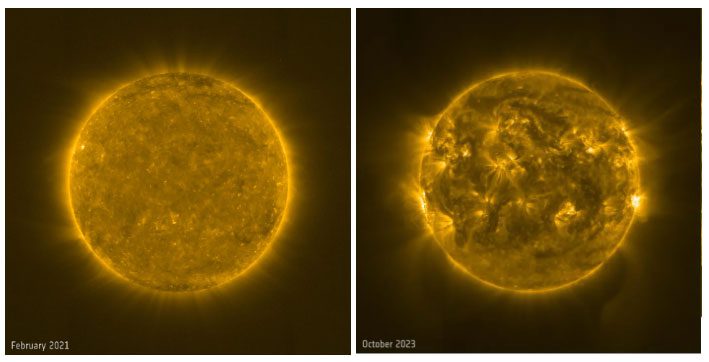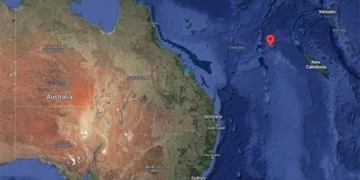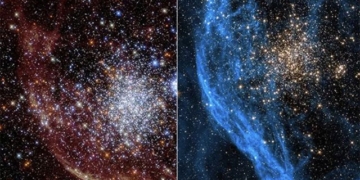The two space agencies from the United States and Europe, NASA and ESA, have recently released two distinctly different images of the Sun, revealing something alarming.
In the first image taken in February 2021, our Sun appears in conventional descriptions: a bright golden sphere, shimmering at its surface.
However, in the image captured in October 2023, the surface of our parent star has become extremely chaotic, filled with “scars” and unusual fiery spots.

Images of the Sun in February 2021 and October 2023 – (Photo: NASA/ESA).
According to Science Alert, these images provide evidence of how a solar cycle can impact this star, and also suggest what Earth is experiencing as a result.
Our Sun is a massive ball of plasma, containing charged gases and capable of shifting its magnetic field.
As the Sun rotates, its corona is dragged along. However, because this celestial body rotates faster at the equator than at the poles, the magnetic field lines are under immense pressure. Occasionally, they snap, bursting apart like a net being pulled too tightly.
Whenever this event occurs, sunspots appear. These sunspots are also the launch points for energetic solar flares. Each time these fiery projectiles strike the Earth’s corona, they cause geomagnetic storms.
You may find it difficult to perceive geomagnetic storms, but systems like GPS and radio do. They can disrupt satellite launches, or more closely, cause mobile phone signals to falter, as was recently experienced in the United States a few days ago.
The difference between the Sun in 2021 and 2023 is that in 2023, the celestial body has reached the peak stage of its cycle, when it is explosively active, and the magnetic field lines are continuously being torn apart.
This cycle lasts 11 years, and we are still at the peak phase, preparing to endure the most intense geomagnetic storm period before our parent star reverses its magnetic poles and returns to a calmer state.
This transition is expected to occur in 2025, but it could happen sooner.
Currently, NASA and ESA have numerous solar observation instruments orbiting this celestial body, in addition to observations from Earth.
Understanding the solar cycle is also a way for us to minimize damage to ground and orbital systems that humanity increasingly owns and relies on in modern life.


















































